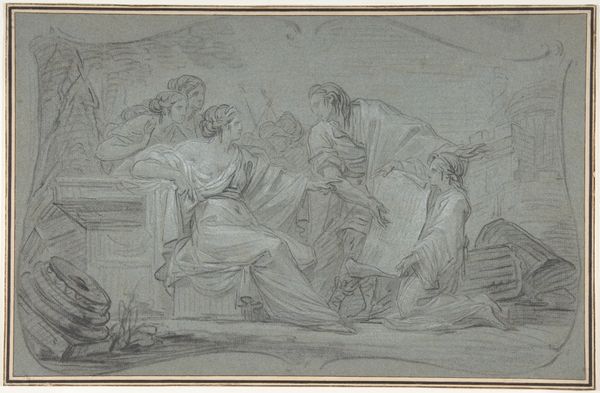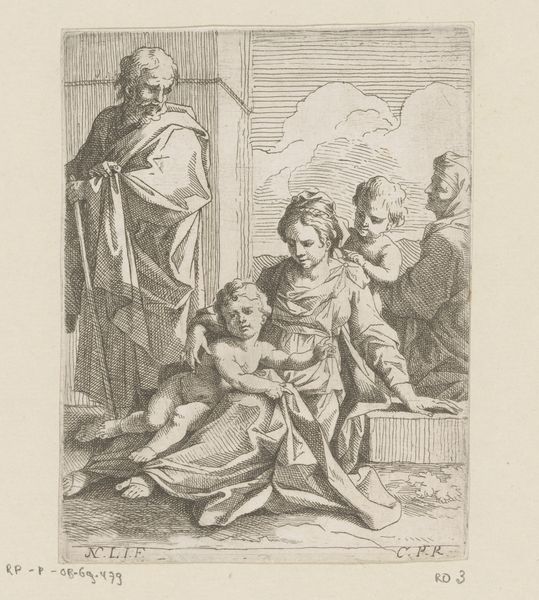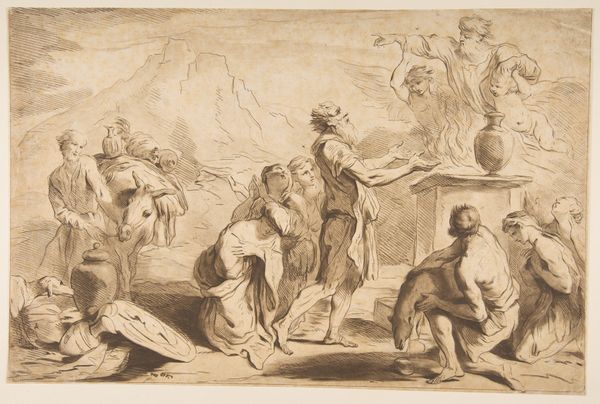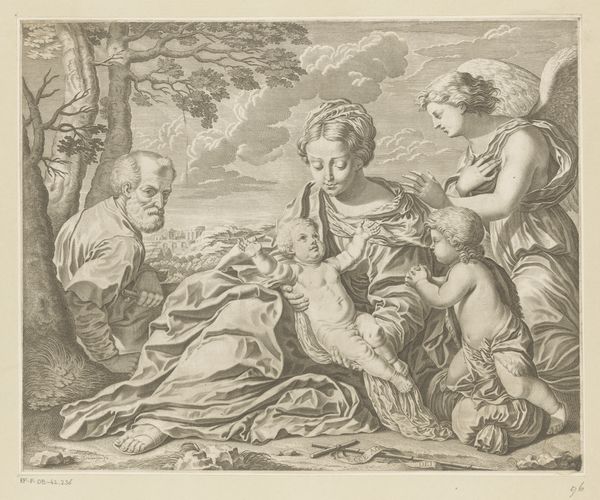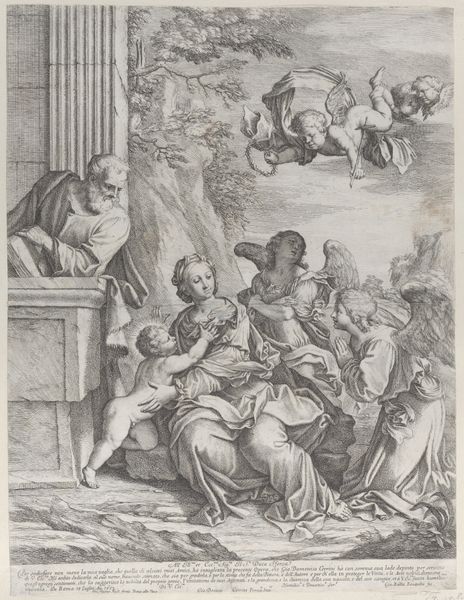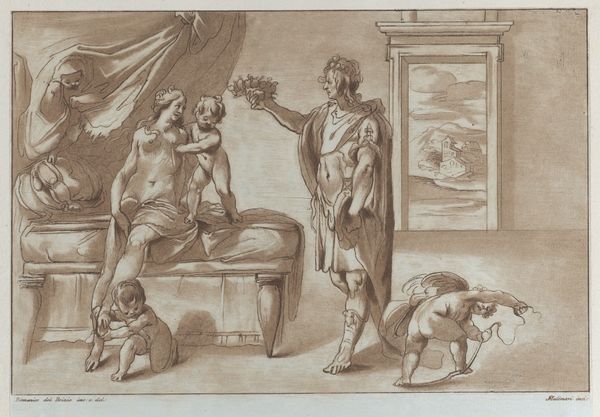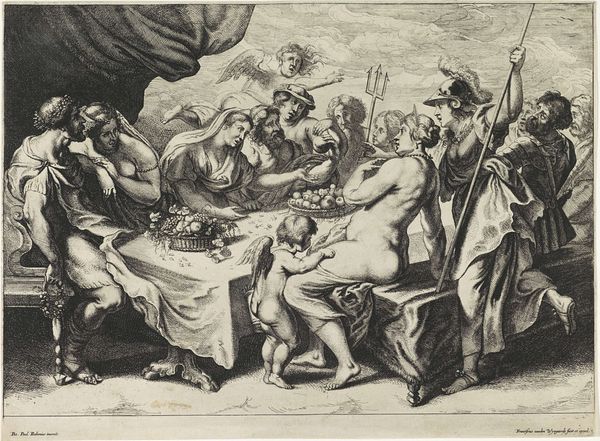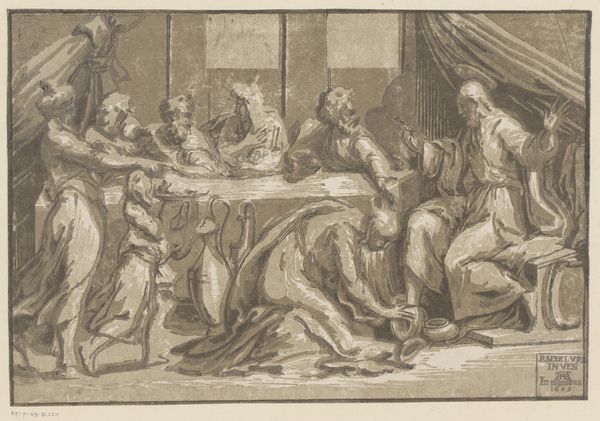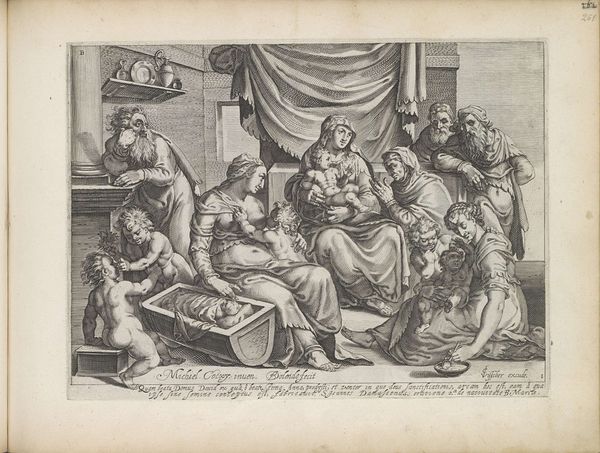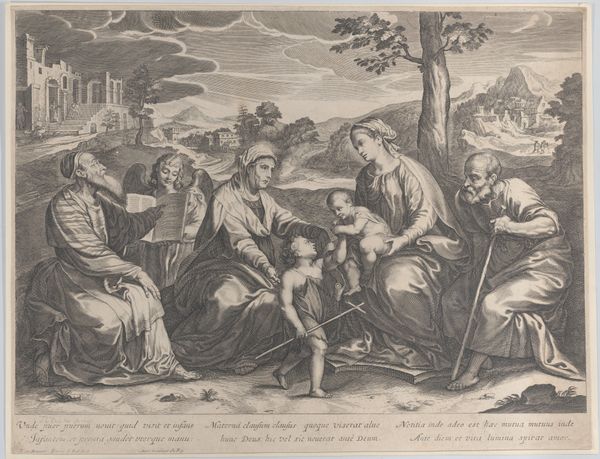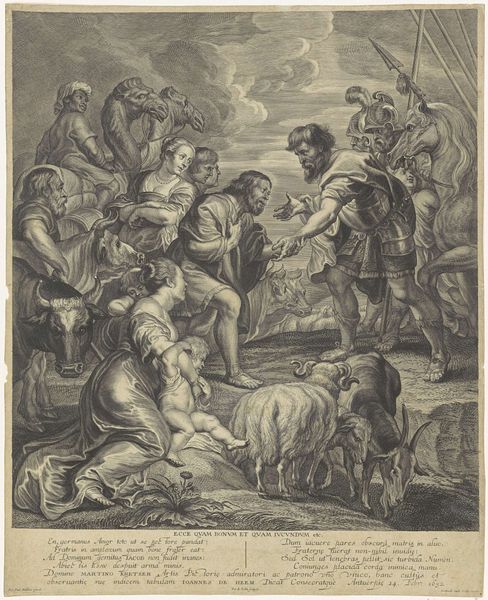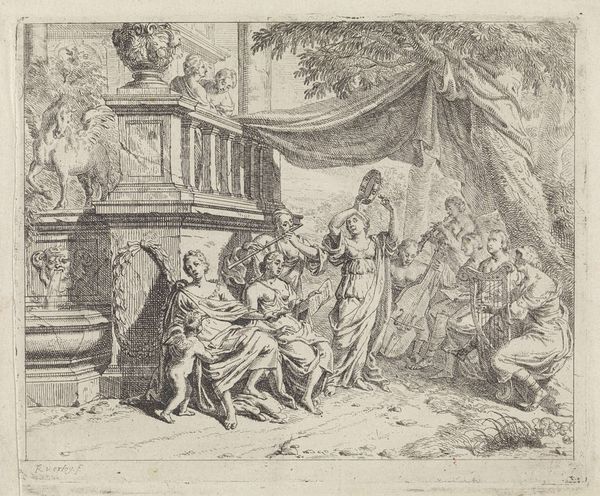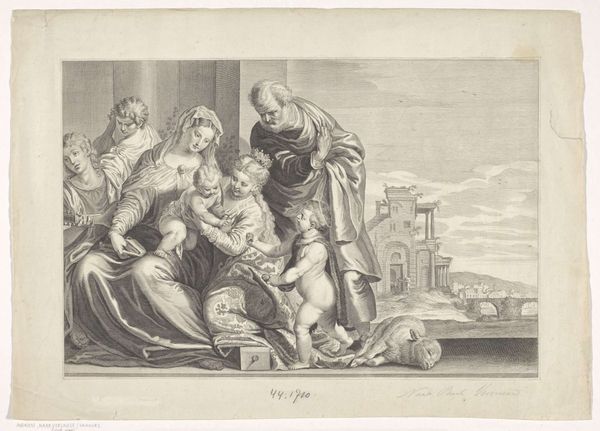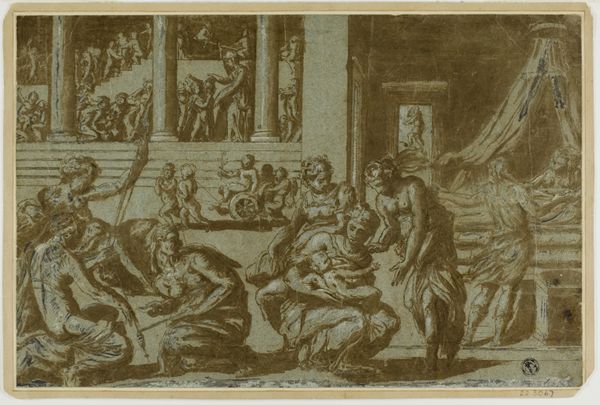
Dimensions: Sheet (Trimmed): 11 11/16 × 12 5/8 in. (29.7 × 32 cm)
Copyright: Public Domain
Curator: Here we have Philip Spruyt's 1784 engraving, "Solomon and the Queen of Sheba," currently held in the Metropolitan Museum of Art. Editor: What strikes me immediately is the controlled chaos of it all. The Queen of Sheba seems almost hesitant in the center, surrounded by figures vying for attention, all rendered with such meticulous detail despite the modest scale of the print. Curator: Indeed. The composition follows a Baroque structure, doesn’t it? Look at how Spruyt uses diagonal lines and a clear hierarchy of figures to guide the viewer’s eye. Solomon is elevated, both literally and figuratively, his gesture commanding the space. Editor: Absolutely. The symbolic weight of Solomon, of course, is tied to wisdom and judiciousness. Sheba’s journey to him represents the seeking of enlightenment, and it also reveals her power as a ruling monarch willing to travel vast distances bearing tribute, like the elephant barely noticeable at the top, to acquire greater wisdom. Curator: Note the contrasting textures Spruyt achieves through line work. The drapery around Solomon, versus the more simplified treatment of the figures in the background, create depth. Observe how that impacts the visual reading of the scene. Editor: Those differences in texture highlight status and the importance of the figures near Solomon. It’s intriguing to consider the long shadow of this narrative – how the story of Sheba has been molded across cultures. The way her visit speaks of a shared pursuit of wisdom between vastly different cultures, something history seems determined to forget. Even in that era the queen was being transformed from regal, powerful, inquisitive explorer to beautiful concubine through the manipulation of image and language. Curator: That’s a vital point. What seems like a mere illustration reveals complex cultural and political undercurrents, the Baroque love of theatricality almost playing out as propagandistic exaggeration. Editor: It serves as a sharp reminder that images always carry embedded ideologies, whether of their era or later. It begs to question what contemporary symbolism we would ascribe to a state visit like the one on view here? Curator: A question best left to our visitors, I think. Thank you for sharing your insightful reflections with me on Spruyt’s wonderful image. Editor: My pleasure. It has given me a greater insight on Spruyt's decisions as a function of their time, a window into what came to pass.
Comments
No comments
Be the first to comment and join the conversation on the ultimate creative platform.
